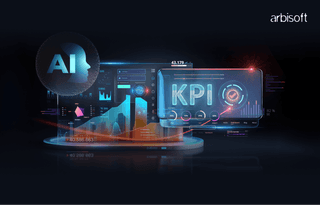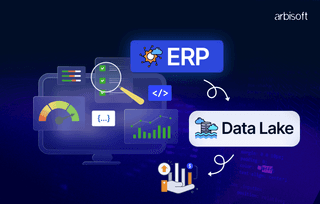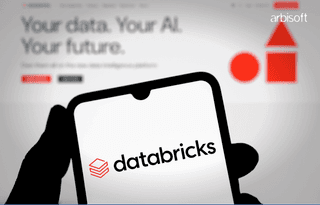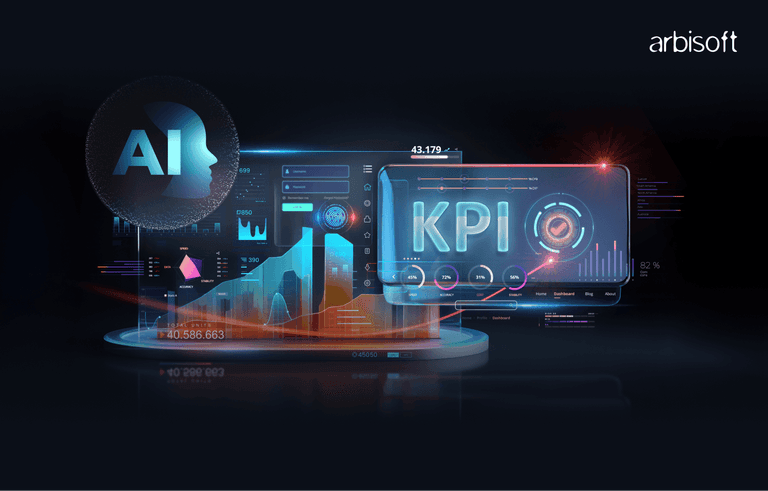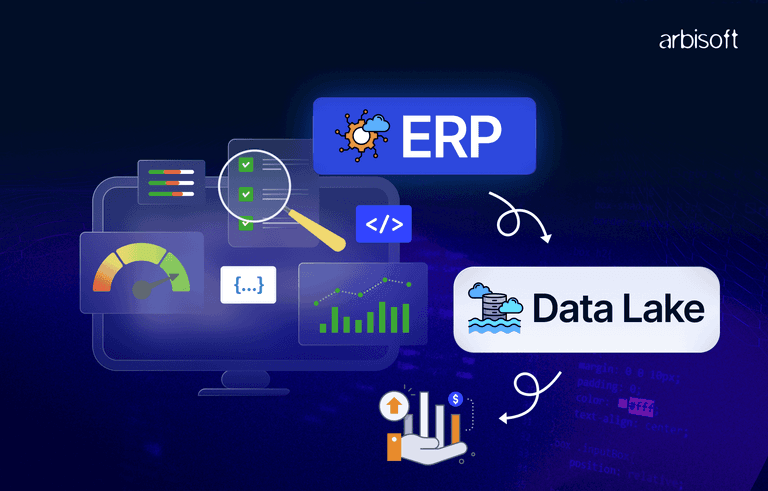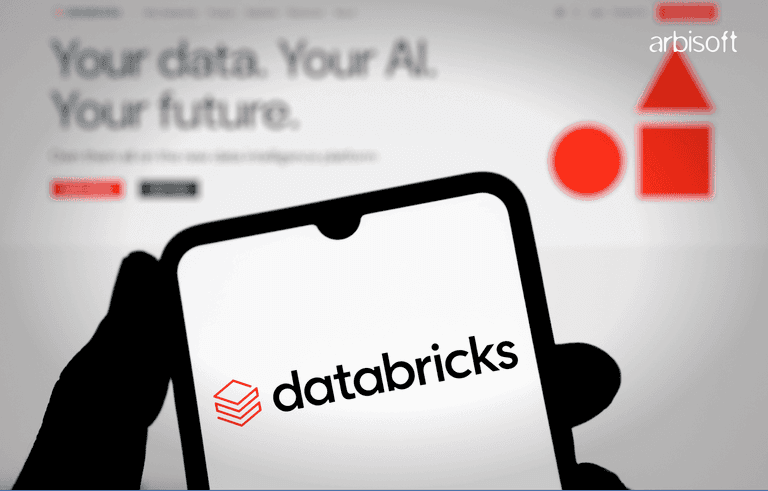We put excellence, value and quality above all - and it shows




A Technology Partnership That Goes Beyond Code

“Arbisoft has been my most trusted technology partner for now over 15 years. Arbisoft has very unique methods of recruiting and training, and the results demonstrate that. They have great teams, great positive attitudes and great communication.”
Should You Choose Staff Augmentation, a Dedicated Team, or Outsourcing for Your Data, ML & AI Needs?

Let’s get right to it. Choosing the right team model for your AI, machine learning, or data project is no small task. It directly affects your timelines, budgets, and long-term scalability. This post walks through all your options: staff augmentation, dedicated teams, and outsourcing, so you can make an informed decision without the guesswork.
Pinpointing the Data, ML & AI Challenge
Before we dive into team models, let’s first understand what makes AI projects so challenging. I’ve seen projects stumble not because the ideas were flawed, but because the execution model wasn’t suited to the team’s capabilities or business context.
AI projects typically involve massive datasets, unpredictable model behavior, regulatory concerns, and evolving business needs. Add in pressure from leadership and limited internal bandwidth, and suddenly your team is juggling too much.
This complexity forces you to reconsider whether your current team setup can truly deliver.
Rising Demand for Specialized AI/ML Talent
Now that we’ve covered the workload challenges, let’s address the skills gap. Hiring for machine learning and AI roles isn’t what it used to be. The market is competitive, the skillsets are niche, and top engineers are rarely on the market for long.
You might spend months sourcing candidates, only to lose them to a faster-moving competitor. Meanwhile, your product roadmap suffers.
That’s why more companies are turning to external talent models that offer faster access to expertise without the wait.
Bottlenecks: Time-to-Market, Budget, and Legacy Integration
We’ve touched on skills, but let’s talk about infrastructure and budget. Once hiring is delayed, it creates a domino effect. Deadlines stretch, backlogs grow, and budget forecasts fall apart. And when your infrastructure includes legacy systems, the integration overhead gets even worse.
If your internal setup can’t keep pace, it might be time to shift gears and consider an external engagement model that can.
ROI Pressure and Project Misses in a Competitive Landscape
We’ve looked at operational issues. Now let’s look at business pressure. Stakeholders care about ROI. They want results, not excuses. If you miss a release or go over budget, your reputation takes a hit.
In the race to deploy effective AI, slow hiring cycles or a misaligned delivery model can mean losing ground to competitors.
So how do you build smart and ship faster? You start by choosing the right way to scale.
Understanding Your Options: Engagement Models Unpacked
We’ve unpacked the problem. Now let’s talk solutions. You’ll usually find three common models: staff augmentation, dedicated teams, and full project outsourcing. Each has pros and cons, and your ideal choice depends on project scope, urgency, and internal maturity.
What is Staff Augmentation in AI/ML?
Staff augmentation means bringing in external specialists who integrate with your internal team. You still manage the work, but now you have access to niche skills.
For example, if your ML team needs someone with experience in reinforcement learning for three months, staff augmentation gets you that expertise without a permanent hire.
This model is ideal when you have clear internal processes but just need to plug gaps. It also works well when building hybrid AI teams with a mix of in-house and external contributors.
Dedicated Team Model Explained
Let’s take it a step further. Dedicated teams involve hiring an external group of engineers, data scientists, or ML experts who work solely on your project. Unlike staff augmentation, you don’t need to manage them on a day-to-day basis.
This approach is useful when the scope is evolving or when you need deep alignment over a longer duration. These teams often feel like an internal unit but operate independently.
You gain focus, speed, and cohesion. But it requires upfront planning and close collaboration to avoid mismatches.
Outsourcing AI Projects: How It Works
Now let’s consider the most hands-off model. Project outsourcing means handing over full responsibility to a third-party vendor. From model development to deployment, the vendor owns delivery.
This is best suited for defined scopes like developing a fraud detection engine or building a data analytics dashboard.
It can free up your internal resources, but only if you’re working with a capable vendor who understands your needs.
Staff Augmentation vs Outsourcing: Key Differences
Now that you’ve seen the models, let’s compare them side by side.
Staff augmentation gives you control but increases internal management overhead. It’s your team, your timelines, and your tools. Outsourcing reduces your involvement but shifts accountability to an external party. Dedicated teams offer a balance: more integrated than outsourcing, but with less overhead than augmentation.
Knowing these trade-offs will help you align the model with your delivery style.
But choosing the model is only half the battle; what to watch out for when hiring an AI development company for custom AI software projects matters just as much. A poor vendor fit can derail even the best team structure.
Evaluating Each Model for Data, ML & AI Projects
Let’s make this more actionable. Which model works for your actual AI or ML initiatives?
When Does Staff Augmentation Make Sense?
Staff augmentation fits when you already have strong leadership and internal processes. It’s great when you need to fill temporary gaps or scale up quickly.
You might be launching a chatbot, migrating models to the cloud, or deploying an NLP engine. All of these benefit from temporary, deep expertise.
You might be launching a chatbot, migrating models to the cloud, or deploying an NLP engine. All of these benefit from temporary, deep expertise. And depending on the complexity of your project, it may also be worth exploring when to hire a general software company or a specialized machine learning development company to avoid mismatched capabilities.
Advantages & Disadvantages of a Dedicated Project Team
Dedicated teams are better suited for multi-quarter initiatives where project ownership and continuity are essential.
The advantages include high alignment and focus. But the downside is reduced flexibility if your needs shift suddenly. It’s a great choice when you want consistent velocity without the burden of hiring.
Outsourcing Data Science & Machine Learning: Pros and Cons
Outsourcing works well for clearly defined work. You can reduce costs and avoid hiring delays.
But for projects with lots of changing requirements, it’s risky. You lose control and depend heavily on the vendor’s interpretation.
Comparing ROI: Staff Augmentation, Dedicated Teams, and Outsourcing
Let’s talk about return on investment. Staff augmentation may appear cheaper, but costs build over time. Dedicated teams are cost-effective if you plan to stay engaged over the long haul. Outsourcing is cost-efficient for fixed projects but less so for flexible work.
To make the right call, look beyond price tags. Consider the cost of delay, integration effort, and long-term sustainability.
Aligning Engagement Models with Organizational Needs
We’ve looked at costs. Now let’s align these models with company stage and culture.
Early Stage vs. Enterprise AI Projects: Choosing the Right Model
Startups often lean toward staff augmentation. It gives them speed without bloating the payroll. Mid-sized companies lean into dedicated teams. Enterprises go for outsourcing when they need to scale fast and focus elsewhere.
You need to assess where you are, what you’re building, and how fast you need to move.
Scaling AI/ML Teams: Flexibility and Speed
If your business changes direction often, you need flexibility. That makes staff augmentation and hybrid teams your best option.
If your direction is set, and you just need help delivering, then dedicated teams will give you better throughput.
Integration, Scalability, and Cultural Fit
Don’t overlook culture. Your external team should blend in with your working style, communication habits, and speed.
If they don’t, you’ll spend more time managing than shipping. That’s a cost too.
Decision Factors for Scaling Data, ML & AI Teams
As we near the end, let’s look at some overlooked decision filters that matter just as much as cost and speed.
Transparent Pricing & Budget Control
Ask for clarity. Get pricing in writing. Insist on regular budget reviews. If you feel like you’re being kept in the dark, you probably are.
Proven Provider Capabilities & Case Studies
Ask for proof. Real results. Similar clients. And clarity on what they actually delivered. This helps you avoid promises that don’t hold up.
Before shortlisting vendors, it's worth reviewing this detailed guide on how to assess the AI expertise of an AI development company. It walks through what real AI skills look like and how to separate polished demos from production-ready capabilities.
Regulatory Compliance and Security Considerations
If your project touches customer data, make compliance a non-negotiable. Ask vendors how they manage privacy, encryption, and audit trails.
Role of Internal Stakeholders & External Influencers
Don’t fly solo. Pull in your internal stakeholders early. Also, check peer reviews. A 10-minute chat with someone who’s worked with a vendor can reveal a lot.
Action Steps and Best Practices
Time to wrap it up. You know the models. You know what to watch for. Now here’s how to move forward.
How to Select Top Staff Augmentation Companies and Outsourcing Partners
Prioritize alignment. Look at team retention, delivery record, and how they handle tough situations. The best vendors are proactive, not reactive.
Maximizing ROI on AI/ML Team Models
Start small. Monitor progress. Align incentives. And pivot fast if things don’t work.
Don’t wait till the postmortem to realize you went off course.
Future-Proofing Your Data, ML & AI Initiatives
Build for adaptability. Whether it’s your stack or your team, flexibility helps you adjust without starting over.
Explore Arbisoft's custom software development services built to scale with your AI goals.
And that’s what it’s all about: scaling AI the smart way by choosing the model that fits today, and flexes with tomorrow.
People Also Asked
1. What are the main engagement models for AI, machine learning, and data projects?
The three most common models are staff augmentation, dedicated teams, and full project outsourcing. Each offers different levels of control, speed, and flexibility, depending on your project scope and internal capabilities.
2. How is staff augmentation different from a dedicated team model?
Staff augmentation adds individual external specialists to your in-house team, with you managing their work directly. A dedicated team is an external group working exclusively on your project but managed more independently, reducing your day-to-day oversight.
3. When should I choose staff augmentation for my AI/ML project?
Staff augmentation works best when you already have strong internal leadership, well-defined processes, and need to fill short-term skill gaps quickly, such as adding an NLP specialist for a specific release.
4. What are the advantages of a dedicated AI/ML team?
Dedicated teams provide long-term focus, deep alignment, and consistent velocity without the overhead of hiring full-time staff. They’re ideal for multi-quarter projects with evolving requirements.
5. When does full project outsourcing make sense for AI development?
Outsourcing is a good fit for clearly defined, self-contained projects like building a fraud detection engine or a data analytics dashboard. It allows your internal team to focus on other priorities while the vendor delivers end-to-end.








